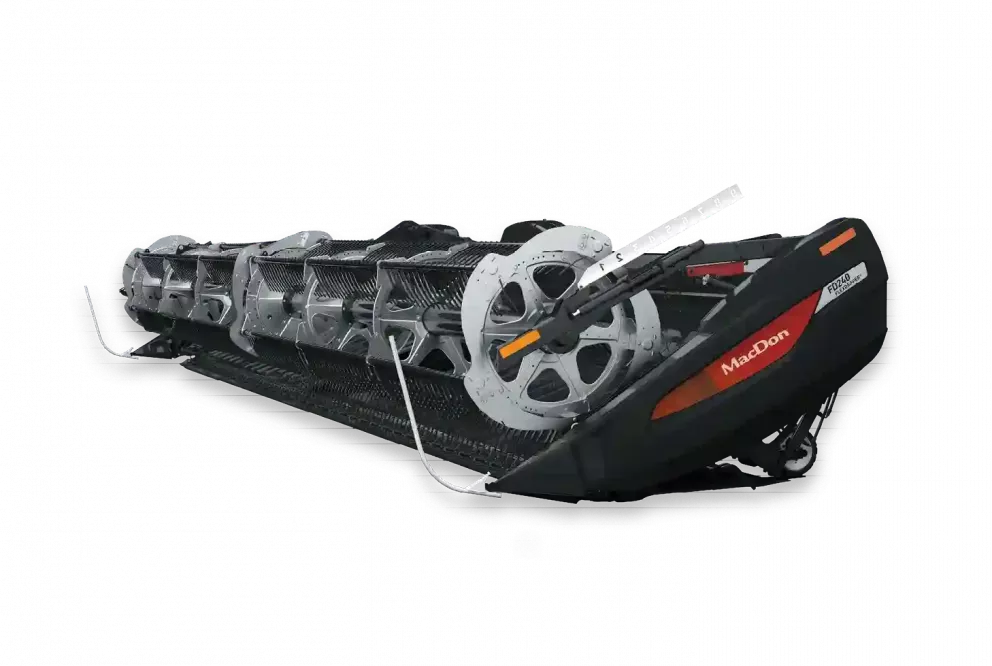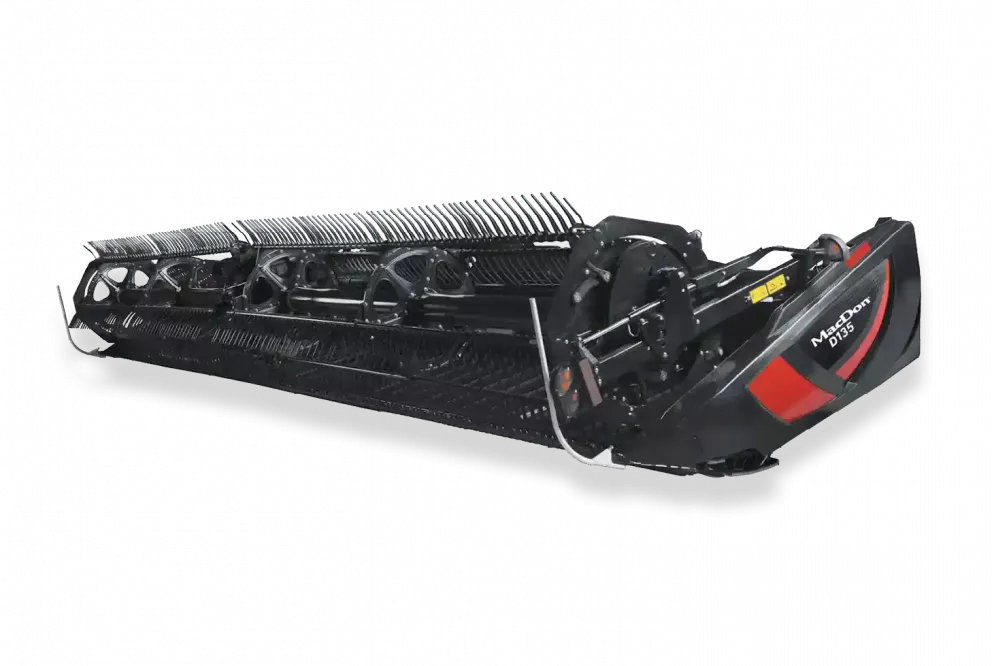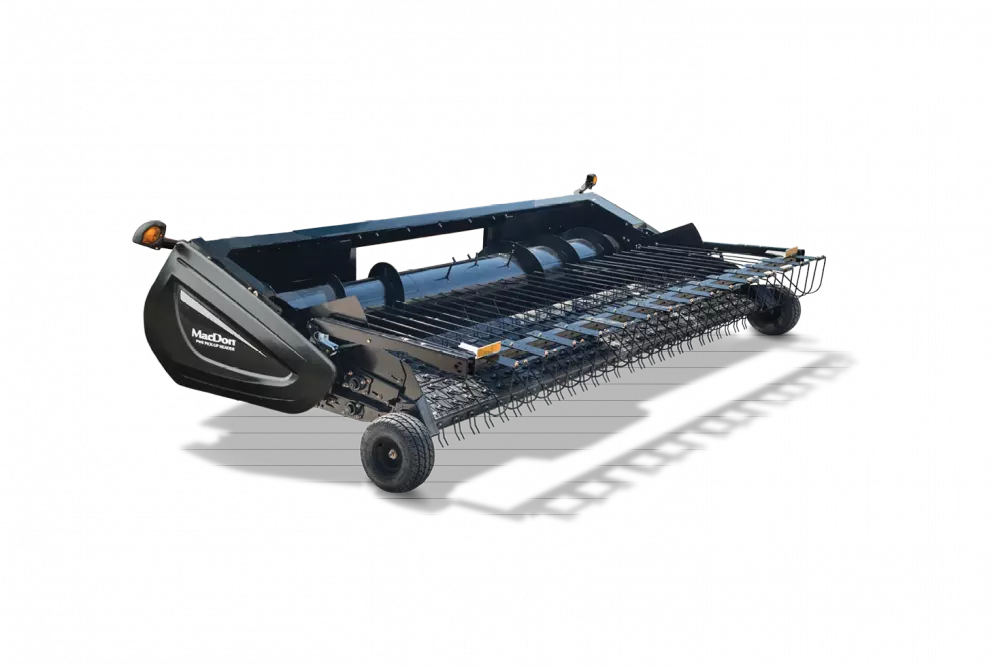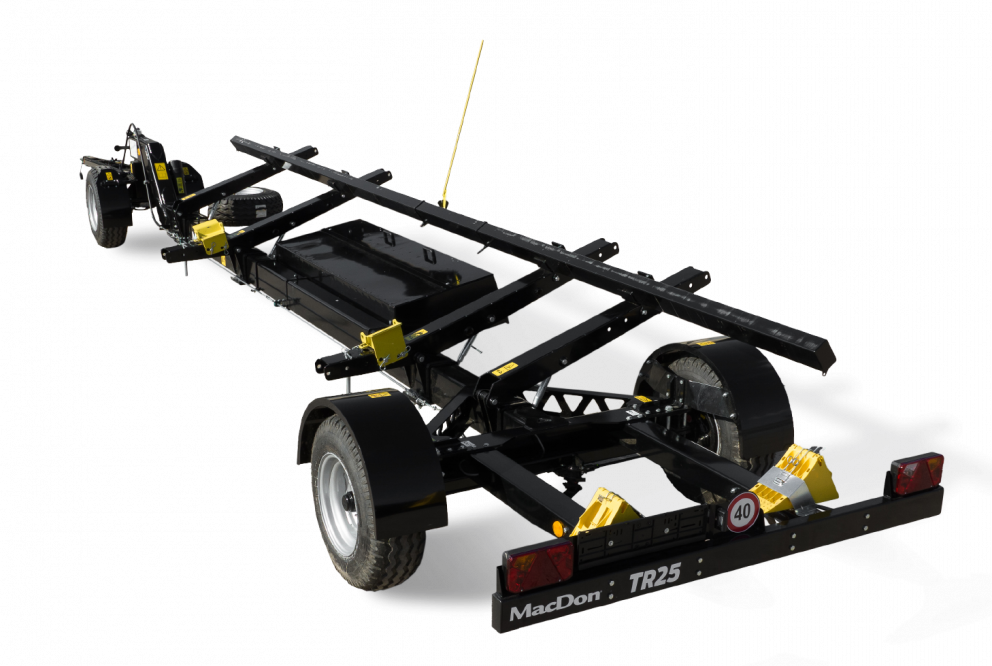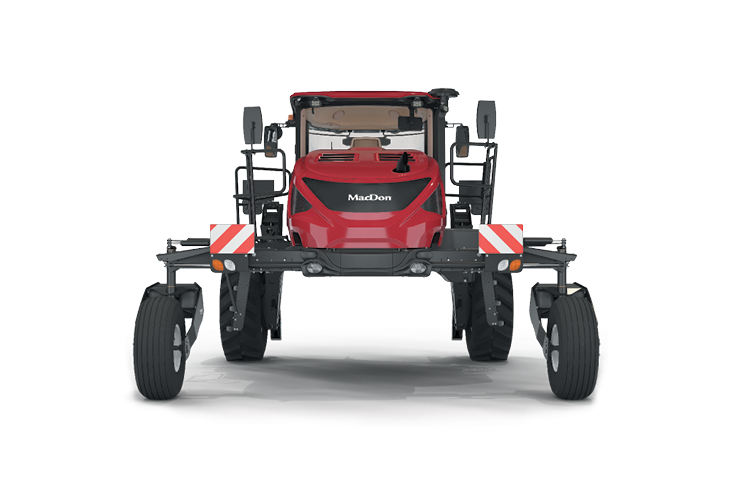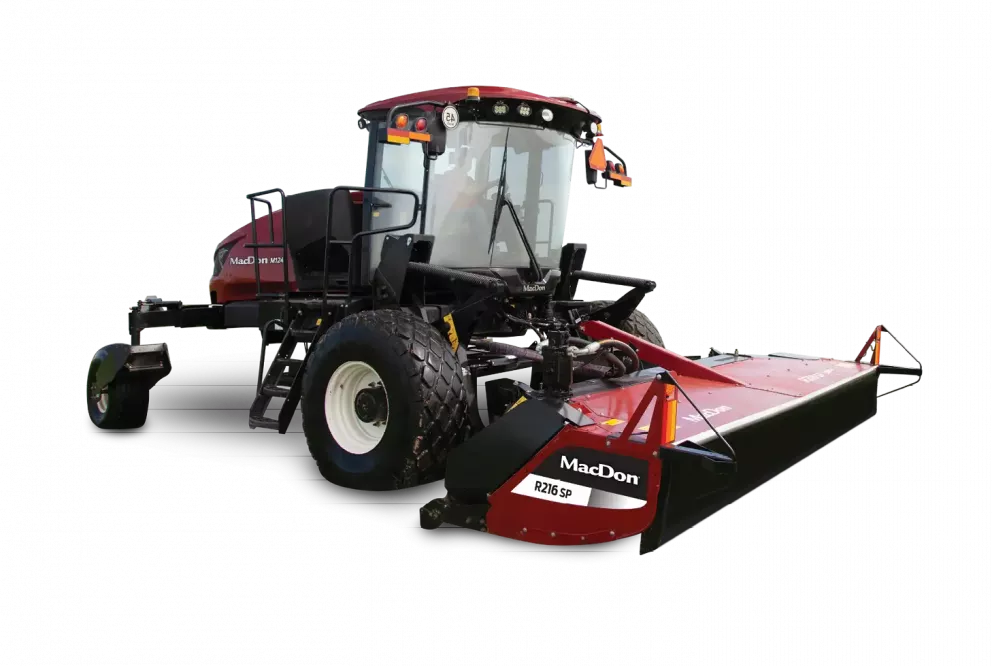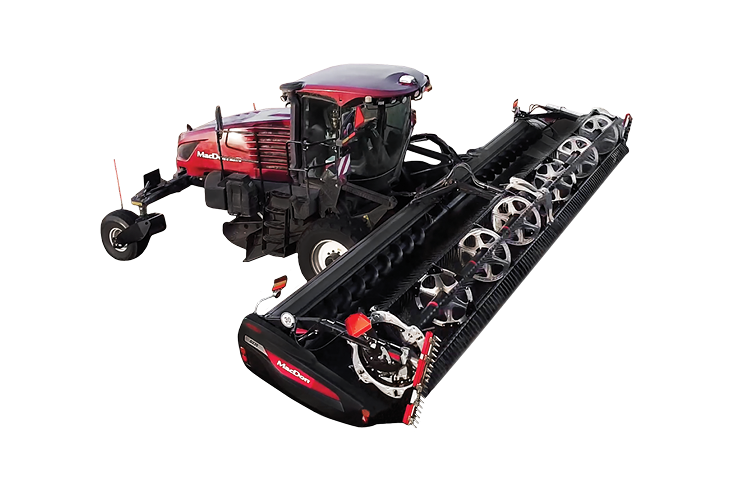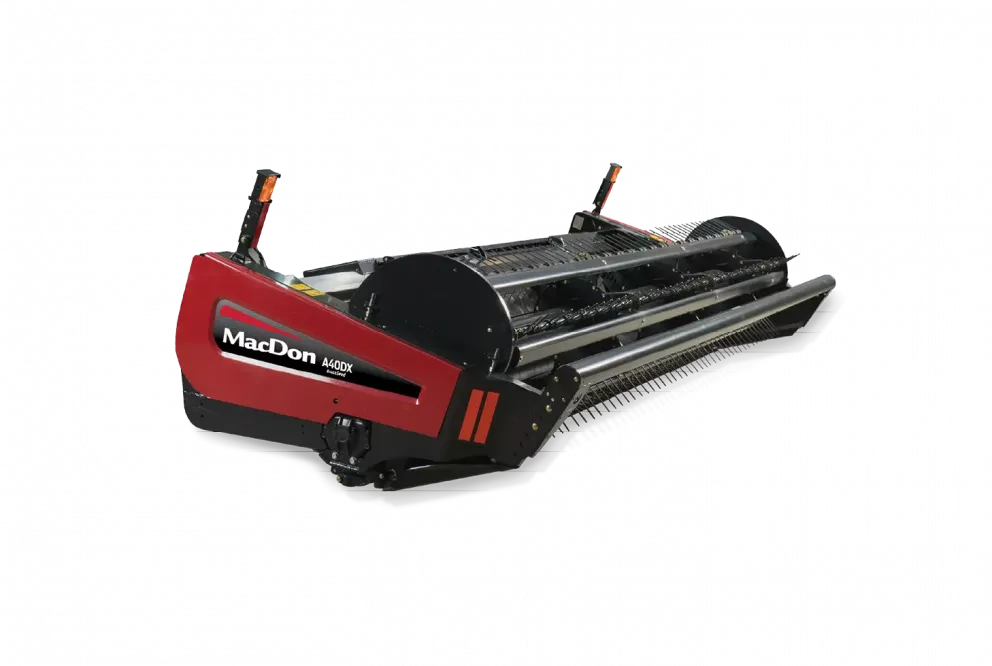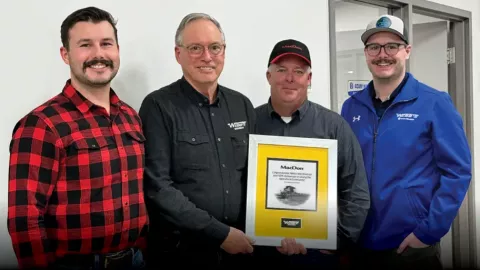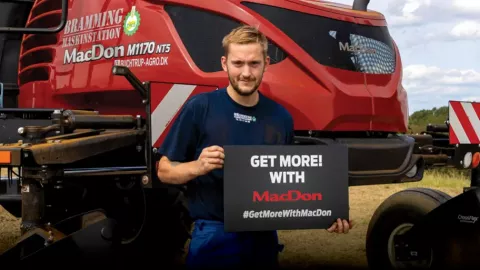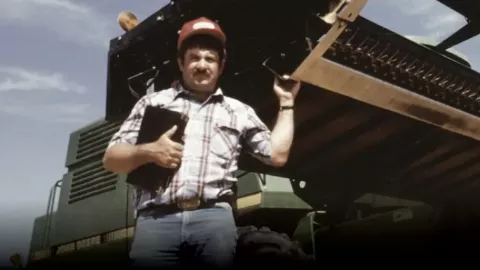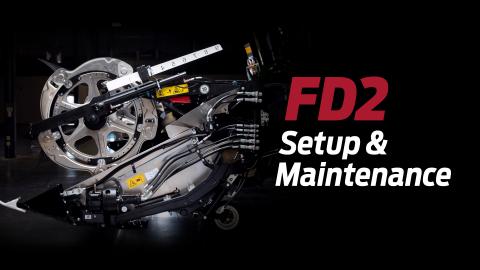Wheat Field Nomads
Embracing the custom cutting lifestyle with the Zeorians.
OUR GIRLS KNOW THAT WHATEVER THEIR JOB IS, THAT IT IS AS IMPORTANT AS MOM’S OR DAD’S JOB.
The caravan of custom wheat harvesters that moves northward from Texas every summer contains many family operations; but none smaller or tighter than that of the Zeorian family. With just one combine, Tracy and Jim Zeorian and their two youngest daughters Taylor (19) and Callie (16) are continuing to prove that it is possible in this world of big agriculture – and big expenses – for a single combine custom cutting operation to still make a success of it.
“We’re not rich, but we’ve made it work,” says Jim taking time out from their work in Jordan, Montana, the family’s last stop of the 2013 harvest before returning home to Nebraska to pick up some fall work there. “Both Tracy and I have been around custom cutting since the mid 70s when I was a hired hand for her family’s operation. After getting married in 1982 we continued to cut off and on with Tracy’s Grandpa and Dad.
The economy was making it tougher to continue supporting three families. But in 1991 Tracy and I finally took the gamble, bought a new Case IH combine and left two weeks later to see what we could do on the road with one combine and a young family.“
Back then the girls with them – they have four in all – were Jamie and Jenna, their two oldest daughters. Jamie is now married with a young son and Jenna has a job in marketing in Omaha, Nebraska, only 20 miles (32.2 km) from the Zeorian’s home in Manley. Initially, Jim and a hired hand did the combining while Tracy managed the vital support work of taking care of the shopping, laundry, cooking and, of course, the children. But in 2001, once their oldest daughters were capable of taking over the housework, Tracy was able to live her childhood dream of being a combiner and join Jim in the field. The move allowed the family to save on the cost of a hired hand, money they could now put towards their children’s college educations. Tracy says her move to the field was both helpful and a little bit selfish as she was doing something other harvest wives might not have a chance to do.
“Our girls have grown up knowing that they have had to take charge of the job that I had been doing,” says Tracy. Most harvest wives do the cooking and the housework for the crews because it’s a very important job that needs to be done. They don’t have the opportunity to go out into the field and work as I do.”
In addition to the family’s New Holland Combine, mounted with a 35' (10.6 m) FD75 FlexDraper®, the Zeorians also maintain a Peterbilt, a Freightliner straight truck, two pickups, a fifth-wheel travel trailer (their home for 100 days of the harvest journey), and a car. Moving it all from job-to-job is a true team effort.
It takes us two trips to move the equipment each time,” says Tracy. “For our first trip Jim will drive the Peterbilt with the combine and grain trailer and I will drive the pickup with the header trailer. After we reach our new job, we’ll drive the pickup back to get the trailer house and the rest of the crew. Jim pulls the trailer house with the pickup, I drive the Freightliner pulling the car trailer (hauling the service pickup), while Taylor and Callie drive the car. It seems like a lot of driving but we learned a long time ago we do what we have to do to make it all work.”
They will perform this routine eight to 10 times a summer, depending on how many contracts they have, plus one more time when they return home to Nebraska for the fall harvest there. In total, they will cut in the neighborhood of 5,000 acres (2023.4 hectares) of wheat on the road every summer, plus another 1,500 acres (607 hectares) of corn and soybeans back in Nebraska. Tracy says that it’s a big help to have their daughters with them for the bulk of the summer harvest, and believes that they benefit from spending time with the family working hard.
“It’s forced family time. Our girls know that whatever their job is, that it is as important as mom’s or dad’s job. You’re all working towards the same common goal. And when you meet that goal it is a satisfaction for everybody, you can look at each other and say ‘hey we did a good job’ and then move on to the next one.”
“I recently chatted with a young harvest wife who was concerned that the life might not be fair for her daughter because she won’t get to experience a normal summer with her friends. I tried to reassure her that what she is doing is going to make her daughter unique. Her daughter will be the one that stands out because she will have a work ethic different from everyone else. That’s what I see with my kids; I have to believe that the leadership and take-charge attitude they show has something to do with being out in the field and being responsible for where they need to be and taking care of what they need to take care of.”
Jim says that despite the hard work and added responsibility, all four of their girls have enjoyed being part of the harvest.
“They enjoy the life. When they are in the middle of it they can become bored, but when they get home they say ’I miss the road.’ When they go home early to start school the kids wish they were still with us. In the springtime they are always raring to go.”
It’s also a life that Jim enjoys, although he admits to being most passionate about the machinery aspect of the job.
“I’m a guy that loves machines. I grew up as a farm kid without a farm, but got to do everything any other farm kid would do; driving tractors, trucks and everything that goes with them. It’s a great life when everything is running. When things aren’t, you sometimes question why you are doing it.”
For the most part things have been running well for Jim and the family, especially their MacDon FD75 FlexDraper® Header.
“This is just our third season with a MacDon. We had run over 10,000 acres (4046.9 hectares) through our first one, an FD70, with no issues except one small hole in the pan under the auger.” says Jim. We’ve now got one full season under our belts with our new FD75, and I can say its a good header. It runs as it’s supposed to. We get more done each day. The darn thing just works.”
While there are many things that Jim likes about the FlexDraper®, such as it has allowed him to eliminate the cost of also owning a dedicated soybean header. What he likes most is its mechanical flotation system which uses springs instead of “complicated electronics and hydraulics.”
“I think MacDon’s flotation is just great; it’s the miracle mystery of what really makes it work. The engineers that perfected that design should pat themselves on the back for an amazing feat of engineering. I know good machinery guys who look at how the head is carried on springs and just shake their heads. They can’t figure out how it works so well.”
According to Jim, the Zeorians were among the last of the custom cutters to convert to using MacDon headers on their combines. Before that he had stubbornly continued to use more traditional auger heads, even though it meant getting ribbed about it from time to time.
“I have good friends that have run MacDons consistently for about 10 years. The son of that operation would laugh at me and say ‘Jim, you’ve got to get out of the stone age. You’ve got to run a MacDon.’”
Born to Cut.
Tracy Zeorian describes it as an “addiction.”
“It may be a sickness with me. I really think I could sit in a cab every day and not get tired of it,” she says about her love of driving a combine. “When the door shuts I am in my own little world. I watch what needs to be watched, and I think about stuff. And, before you know it, it’s like holy cow, where did this day go?”
She says her addiction started at the age of 12 when she joined her grandparents – both custom cutters – for the 1974 wheat harvest. She had been invited along to help out her grandmother with the housework and shopping, but it was when her grandfather invited her up into the cab of his 750 Massey combine and showed her how to run it that her world changed. After that day, she would try to get behind the wheel whenever she could.
“I’m not sure exactly what got me hooked,” recalled Tracy about that first time. “Maybe just the fact of getting inside that combine and knowing that grandpa trusted me to do it. He would say this is what you do and then he would jump out. He showed a lot of trust; grandpa was just that way.”
But more than just the chance to drive a combine for months on end, Tracy says that there are other rewards to be found in the custom cutting life, as hard as the work can get.
“Most of the people we work for are added to our Christmas list; they’re more than our customers, they are our friends. We all look forward to that two weeks every summer when we get to be together with each of them again.”
“For example, we’re sitting in Jordan, Montana, right now, and this is our 32nd year being here. I pulled into this town with my grandpa and grandma as a 19 year old kid. Today we’re still here seeing the same people, and have had to say goodbye to some who have passed away. That’s the kind of relationship that you develop when you go to the same place year after year after year.”
Tracy’s passion for the custom cutting life has lead her to become more involved in the political side of the business by joining the US Custom Harvesters Association (uschi.com) along with her husband Jim. With the organization she has not only served as a board member of since 2005, she was also the USCHI’s first female president from 2010 to 2013.
“It was my vision when I stepped into being a board member to make the association something that would be a little bit more well known. The industry knew of custom harvesters, but I didn’t see that the rest of agriculture knew that we were out there. I didn’t see any form of acknowledgement or advertising that recognized what we are doing for the farmer. I wanted the industry to know that custom harvesters remain a good option for farmers, that we’re fulfilling an important need.”
She says that within the last several years, because of the work of the Association and its efforts to become more involved with other agricultural organizations, that the work of custom cutters has gained a higher profile within not only the ag world, but also in Washington, D.C.
“When we go to Washington now they no longer look at us like ‘what is a combine?’ They know who we are. That’s a huge thing for us, the fact that the world knows who U.S. Custom Harvesters are now.”
In addition to her work for the association, Tracy also works hard promoting and educating about the lifestyle through her own Internet blog (nebraskawheatie.com). Anyone interested in reading more about the custom cutting life is urged to check it out.
